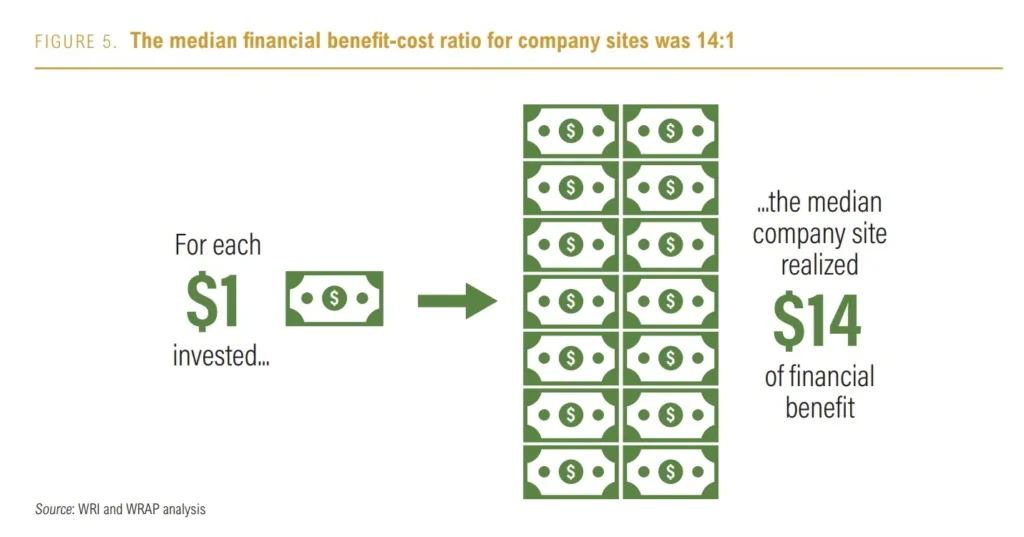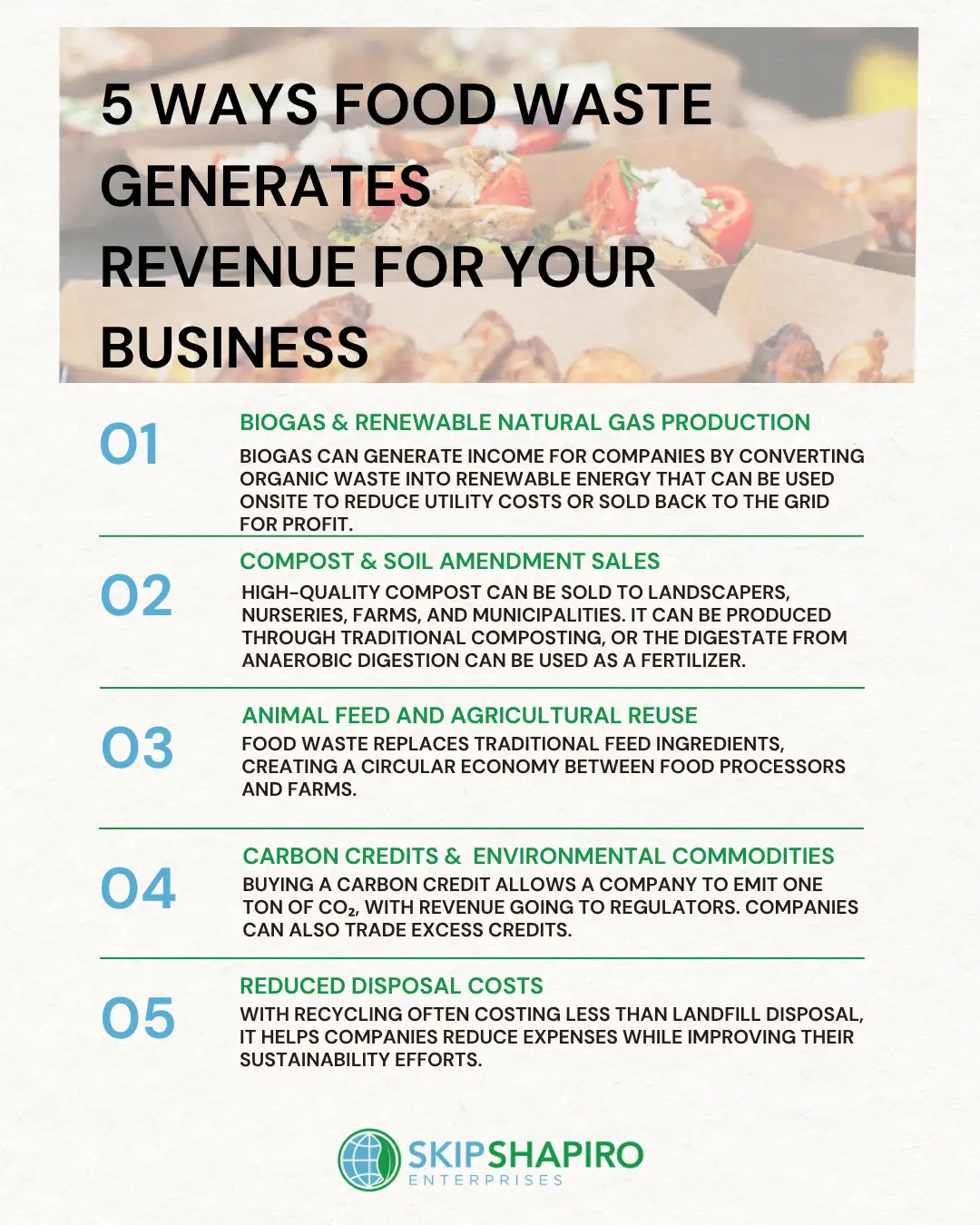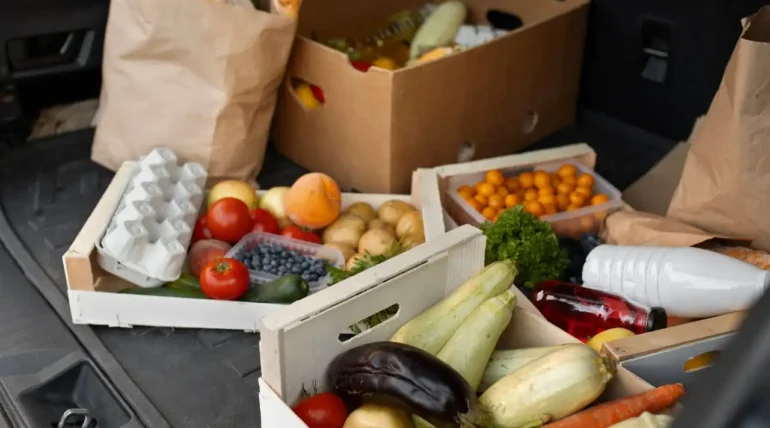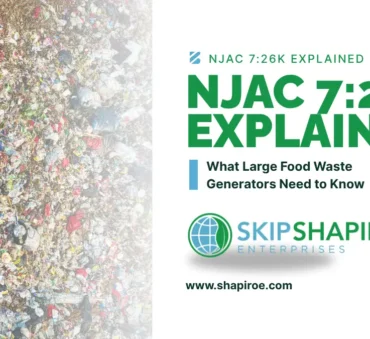While food waste is a humanitarian concern, it’s also an economic one.
With the total cost of food loss and waste for the global economy estimated at roughly $1 trillion, businesses, households, and governments alike are concerned about its financial impact.
To address this concern, businesses should stop viewing waste as a financial issue and start seeing it as a revenue-generating resource. Why?
Because the return on investment in food loss and waste reduction can be high; one study shows that for every $1 invested, the median company site realized a $14 return. That said, transforming waste into valuable resources like biogas, fertilizers, and animal feed opens the door for greater sustainability and financial opportunities.
Keep reading to learn more about food waste costs, where we discuss how food waste can help your company generate revenue, tips for calculating your food waste ROI, and more.
Key Takeaways
- Biogas can generate income for companies by converting organic waste into renewable energy that can be used onsite to reduce utility costs or sold back to the grid for profit.
- High-quality compost, produced through traditional composting or from the digestate of anaerobic digestion, can be sold to landscapers, nurseries, farms, and municipalities.
- Turning food waste into animal feed replaces traditional ingredients, reduces feed costs, and supports a circular economy that allows businesses to generate new revenue through agricultural waste recycling.
- Carbon credits allow companies to offset emissions while serving as tradable assets that help meet sustainability goals and generate additional revenue through trading and investment.
The Hidden Costs of Food Waste Go Beyond the Dumpster
The economic impact of food waste is hard to ignore. Not only because it amounts to an estimated $218 billion in the U.S. alone, but also because it directly affects businesses of all sizes.
The effects of food waste on the economy include:
- Disposal costs: Businesses not only pay for hauling but also face landfill tipping fees—which have recently surged. A new analysis reveals a 10% national increase in tipping fees, marking the largest year-over-year rise since 2022.
- Resource Loss: Water, energy, land, and labor are all required to produce food—even when it’s not consumed. Each year, food loss and waste in the U.S. consume enough water and energy to power over 50 million homes and occupy farmland equivalent to California and New York combined.
- Loss in Commercial Kitchens: Commercial kitchens typically waste 4% to 10% of the food they purchase before it ever reaches the customer’s plate. That said, restaurants and other food establishments directly experience the economic consequences of food waste.
- Compliance risks: Companies that fail to comply with food waste reduction regulations risk facing significant penalties. Since every state has different laws and regulations, companies must stay up-to-date with the state’s organic bans that apply to them.
- Reputational costs: Companies that are leaders in sustainability have the opportunity to attract eco-conscious consumers. On the other hand, companies that generate large quantities of waste and don’t explore environmentally friendly waste management solutions risk hurting their reputation.

Turning Compliance into Competitive Advantage
There are many solutions to food waste that companies can explore, and not only do innovative strategies help them remain compliant, but they also provide a competitive advantage that drives sustainable growth.
State Regulations Are Expanding for Large Generators
As of 2024, there are 11 states that currently have organic waste diversion laws and regulations enacted to limit organic waste disposal in landfills: California, Connecticut, Maine, Maryland, Massachusetts, New Hampshire, New Jersey, New York, Rhode Island, Washington, and Vermont.
That said, food waste laws in the U.S. vary by state. For instance, California requires all of its inhabitants to separate their organic waste while also making it mandatory for certain businesses to donate edible food to food recovery organizations.
Massachusetts, on the other hand, implemented a Commercial Food Material Disposal Ban to restrict certain businesses and institutions from disposing of commercial organic waste.
While states have varying levels of food waste legislation, they all contribute to the U.S.’ goal of reducing food waste and loss by 50% by 2030.

Leading Companies Are Ahead of Regulations
Leading companies are already enjoying the benefits of food waste management. While new regulations are driving these efforts, forward-thinking companies are proactively prioritizing sustainable waste management.
In addition to reducing food waste costs, this helps them improve their brand reputation and potentially boost their bottom line by turning food waste to revenue. Their proactive approach not only positions them ahead of compliance mandates but also demonstrates how sustainability can drive measurable economic growth.
For instance, organic waste diversion programs have proven successful in Massachusetts. A 2016 study found that these programs helped Massachusetts’ economy by creating hundreds of new jobs, increasing Gross State Product by approximately $77 million, and generating more than $4 million in state and local tax revenue.
Five Ways Food Waste Generates Revenue for Your Business
Companies that adopt a circular economy approach to food waste can reduce costs while generating revenue.
To better understand how this works, check out these 5 solutions to food waste:

1. Biogas and Renewable Natural Gas Production
Biogas is an energy-rich gas produced by the anaerobic digestion of biomass. The U.S. has approximately 2,500 sites producing biogas in all 50 states, representing an estimated $37.6 billion of capital investment. So how can companies profit from it?
Biogas can generate income for companies by converting organic waste into renewable energy that can be used onsite to reduce utility costs or sold back to the grid for profit.
At Shapiro, we’re proud to be part of a network of industry leaders contributing feedstock to the Linden Renewable Energy Project. In addition to addressing the food waste crisis in New Jersey, this project offers a cost-effective solution for large-scale waste generators.
2. Compost and Soil Amendment Sales
High-quality compost can be sold to landscapers, nurseries, farms, and municipalities. It can be produced through traditional composting, or the digestate from anaerobic digestion can be used as a fertilizer.
Not only is the reuse of food waste as a fertilizer an economic opportunity for companies, but it’s also a valuable solution for restoring soil health. By improving plant health, adding nutrients to the soil, and reducing the need for chemical fertilizers, compost serves as a valuable resource for promoting sustainable agriculture.
3. Animal Feed and Agricultural Reuse
Did you know that food waste could be transformed into animal feed?
Food waste replaces traditional feed ingredients, creating a circular economy between food processors and farms. In addition to lowering feed costs, businesses can turn it into a new revenue stream by putting it on the market, thereby maximizing returns through agricultural waste recycling.
However, feed must meet safety and nutritional standards, making it essential to work with an experienced partner that can assist you throughout this process.
4. Carbon Credits and Environmental Commodities
A carbon credit is a permit that allows a company to emit a certain amount of carbon dioxide—typically one ton of CO₂.
As explained by CarbonCredits.com, “When a company buys a carbon credit, usually from the government, they gain permission to generate one ton of CO₂ emissions. With carbon credits, carbon revenue flows vertically from companies to regulators, though companies who end up with excess credits can sell them to other companies.”
These credits offer a valuable opportunity to companies, not only for meeting sustainability goals but also as a financial asset that can generate revenue through trading and investment.
5. Reduced Disposal Costs (Often Overlooked Revenue)
As mentioned, rising disposal costs are a huge concern for businesses. With recycling often costing less than landfill disposal, it helps companies reduce expenses while improving their sustainability efforts.
In other words, companies that eliminate or reduce hauling frequency and costs can minimize the economic consequences of food waste, helping them to further grow their business.
Calculating Your Food Waste ROI
To truly understand the economic benefits of reducing food waste, you should calculate the ROI of your food recycling strategy.
Here are 5 steps to help you do that:
Step 1: Quantify waste generation
The first step is to assess how much food waste your company generates, along with the associated disposal and hidden costs—including labor, storage, hauling, and the lost value of unused food. You can conduct a food waste audit to identify waste sources and quantities.
Step 2: Choose a recycling method
Next, you should consider which organic waste management solution best fits the needs of your business. As you design your strategy, consider factors like potential revenue, waste management facilities nearby, and the logistics of implementing each solution.
Step 3: Estimate potential revenue
To estimate potential revenue from waste management solutions like composting or anaerobic digestion, start by calculating the market value of the end products—such as compost, biogas, or digestate fertilizer. Then, factor in possible savings from reduced disposal costs and any incentives or carbon credits available for diverting organic waste from landfills.
Step 4: Consider intangible benefits
Consider intangible benefits, such as brand reputation, regulatory compliance, and strengthened community relationships. Even without a clear monetary value, these elements play a crucial role and should be considered in your waste management strategy.
Step 5: Measure and track performance
Once your waste management strategy is in place, regularly measure results to assess food waste ROI over time. Track key metrics such as waste diversion rates, cost savings, energy generation, and revenue from by-products. Comparing these results against your baseline data will help identify opportunities for improvement and ensure your efforts remain both profitable and sustainable.
Finding the Right Solutions to Food Waste: Partnering with Experts to Maximize Value
By now we understand that there are many uses of food waste. And while this is great news for large food waste generators, many companies lack in-house expertise to evaluate which diversion pathways deliver the best ROI for their specific waste streams.
As companies evaluate cost-saving food waste management solutions, they shouldn’t just pick a hauler—they should create a strategy that optimizes the entire waste-to-value chain. To achieve this, many companies choose to work with an experienced waste management partner.
As America’s leading organic waste solutions company, Shapiro helps companies navigate complex processing options, state regulations, and revenue optimization strategies. Our end-to-end solutions simplify the reuse of food waste, covering waste assessment and characterization, logistics and hauling coordination, processing and beneficial reuse placement, and compliance reporting and documentation.
Every one of our solutions to food waste is tailored to the unique needs of each business. From sustainable beverage waste management to composting and biochar solutions, we help you stay compliant and reduce food waste costs—and we understand we can’t accomplish this alone.
Our partnerships ensure your waste becomes a resource, not a disposal problem. A great example of this is our collaboration with the nation’s largest food waste-to-renewable natural gas facility, which enables us to help Northeast businesses convert organic waste into renewable natural gas and soil amendments.
Conclusion
The effects of food waste on the economy are a large concern for businesses. That’s why reducing food waste costs should be a top priority for companies, as it not only boosts their financial performance but also reflects their commitment to sustainability.
As an increasing number of companies turn food waste to revenue, the question is no longer “Can we afford to divert food waste?” but “Can we afford not to?”
At Shapiro, we create tailored food waste solutions to help you enjoy the benefits of organic waste management.
Contact us today to discuss our organic waste management services.
FAQs about Food Waste Costs
The most profitable uses of food waste include converting it into renewable energy, producing animal feed, or creating value-added products like compost and soil amendments.
Food waste can both cut disposal costs and generate profit through reuse in energy production, animal feed, or composting.
These programs generate additional revenue by awarding businesses tradable credits for converting food waste into renewable energy or low-carbon fuels, which can then be sold for profit.
Food waste ROI for a commercial food waste diversion program typically ranges from 6 months to 2 years, depending on the strategy chosen and factors like setup costs, waste volume, and savings on disposal and hauling fees.
Baily Ramsey, an accomplished marketing specialist, brings a unique blend of anthropological insight and marketing finesse to the digital landscape. Specializing in educational content creation, she creates content for various industries, with a particular interest in environmental initiatives.



